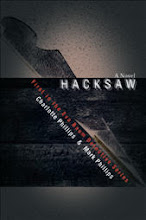At my latest critique group meeting, we exchanged ideas on different ways to view writing passages to identify all the items that need editing - the first or second time through, rather than waiting for the seventh round. This discussion was not about the long list items different authors read for during the editing process (everything from spelling errors to logic flaws), but rather the physical techniques used to get different views of the written word.
Can you guess how many different techniques we identified?
Here they are:
- Print the document and read it on paper
- Read it out loud
- Ask someone else to read it to you
- Have a software program read it to you
- Short stories - read from back to front one sentence at a time
- Short stories - read each sentence by itself, in random order
- Novels - read from back to front one paragraph or one page at a time
- Novels - read each paragraph by itself, in random order
- Download to an e-reader and read it there
Do you use any of these techniques? Do you use any techniques not listed here?
---------------------------------------- Charlotte Phillips is the co-author of the Eva Baum Detective Series, 2009 President for The Final Twist Writers Group and contributor to multiple blogs. Learn more about Charlotte and her books at:
Charlotte Phillips is the co-author of the Eva Baum Detective Series, 2009 President for The Final Twist Writers Group and contributor to multiple blogs. Learn more about Charlotte and her books at:
MarkandCharlottePhillips.com
News, Views and Reviews Blog


One of my favorite tips from a reader here is to change the font and color in the entire document. This is particularly useful when editing on the computer screen, where errors are more likely to be overlooked than on the printed page.
ReplyDeleteGood post, Char. Sounds like a good crit group you have going there.
Dani
http://blogbooktours.blogspot.com
I always read mine out loud - SLOWLY. That usually does it.
ReplyDeleteBlessings, Star
These are all good techniques.
ReplyDeleteIf they're local, my clients come to my office and we read the entire book aloud. With my own novel Dream or Destiny, my editor and I got together in person and did the same thing. Reading aloud always reveals things that have been missed before.
I also do the last edit before the final read-aloud on my e-book reader.
Lillie Ammann
A Writer's Words, An Editor's Eye
I usually just print mine out, but I like some of the other ideas and may give them a try next time.
ReplyDeleteJane Kennedy Sutton
http://janekennedysutton.blogspot.com/
Printing seems to work best for me. I've never been able to master standing on my head.
ReplyDeleteMorgan Mandel
http://morganmandel.blogspot.com
Have recently found that printing it out, reading it aloud AND changing font colour at various times make a very big difference to me.
ReplyDeleteIt was like wading through mud before!
Reading out loud is one of my favorite things. I am always surprised when they leap out at me while reading. Great post, I enjoyed reading it.
ReplyDeleteJenny Bean
http://theinnerbean.blogspot.com/
Reading out loud IS helpful--especially for dialogue. If I can't say it in one breath, neither can the character.
ReplyDeleteMy best editing tip is to let the manuscript sit for at least a week or two. After a while, no matter what fancy tricks I use I've stared at a manuscript too long to see it anymore. Stepping away and coming back illuminates a lot of things I would have missed otherwise.
--Lisa
http://authorlisalogan.blogspot.com
I print my work out, read it aloud, (to someone else preferably), and that usually does the trick.
ReplyDeleteI make sure I have not read what I'm about to edit for at least a few days so I don't read what I thought I wrote. You catch a lot of typos and dropped words that way.
ReplyDeleteThanks All,
ReplyDeleteI'll add changing font/color and leaving some time between edits to my list